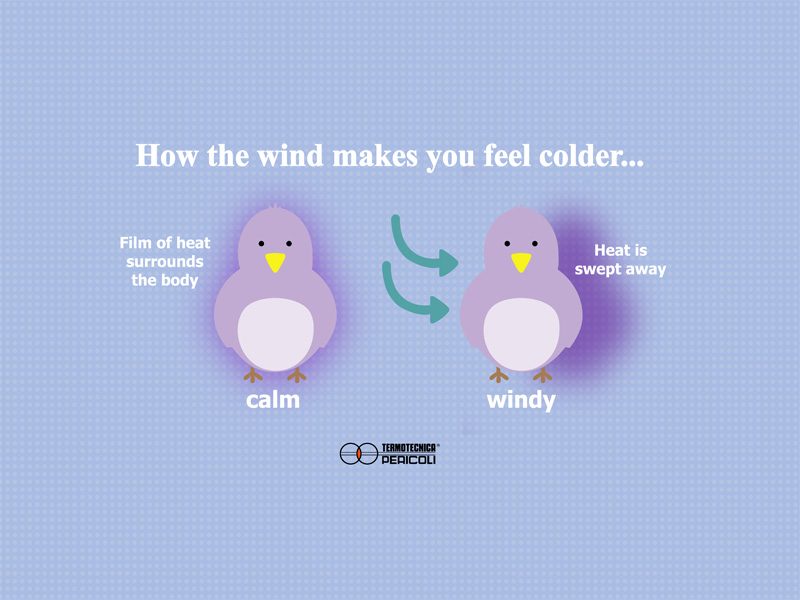What is the so-called “wind chill effect”? Its explanation
Air movement is one of the most effective methods to cool down an environment during the hot season.
The “wind chill effect” is the perceived decrease in air temperature felt by a body due to the airspeed: the greater amount of airflow, the greater cooling effect is produced.
How to calculate the wind chill effect
In meteorology and during the design phase of a climate installation, the cooling index (wind chill) is calculated by knowing the values of the air temperature and its speed.
For example: with an outside temperature of 30°C (about 85°F), with an airspeed of 2 ÷2.5 m/s (400÷500ft/min) the sensation perceived by the animals is an environment temperature about 5.5°C (10°F) lower than the measured value.
This result is due to an increase of the heat loss rate: the animal drains the produced heat faster and at the same time the temperature rise in the whole environment is limited.
Birds, thanks to their improved state of well-being, increase food intake, body weight and consequently their conversion rate.
The method for calculating the wind chill is rather controversial because of its measurement difficulty: thermometers indicate the actual temperature but not the perceived one.
The impossibility of measuring what the animal actually perceives can make it difficult to manage of an environment within which a large quantity of air is moved.
All the tables for measuring wind chill can be very useful but should be considered as approximate since they were created in laboratories by considering a single animal and not the internal surface of a shed with a high amount of birds inside.
What factors to take into account for optimal wind chill?
There are 3 important factors to keep in mind:
- The age of the animals is very important. Younger animals are smaller in size, have more space between them and their heat dispersion is clearly easier. As a result, they need a smaller and less powerful airflow.
- Many wind chill charts refer to a precise temperature, but this is not correct at all. The temperature fluctuations must be taken into consideration: as the temperature drops, the wind chill effect increases because there is a greater degree difference between the air and the animals.
- Recent studies have placed new emphasis on fan maintenance, keeping the shutters system clean and the belt properly tensioned.
The Pericoli Group has always considered this aspect as strategical, always underlining how much a planned and constant maintenance can guarantee better performances.
Exhaust fans with dirty shutters or belt not adequately tensioned, gradually lose part of their airflow with a consequent decrease of airspeed inside the shed and therefore a lower cooling index.
Experimental data show that a loss of 20÷30% of the air flow leads to a reduction of the wind chill effect from 5.5°C (10°F) to less than 2.5°C (4°F).
Further information: How much lack of cleaning can affect the fans' performances?
Do you want excellent performance and an excellent wind chill effect?
Termotecnica Pericoli offers a wide range of exhaust fans that has been improved over the years in order to meet all the customer needs and be able to adapt to the most different application fields.
